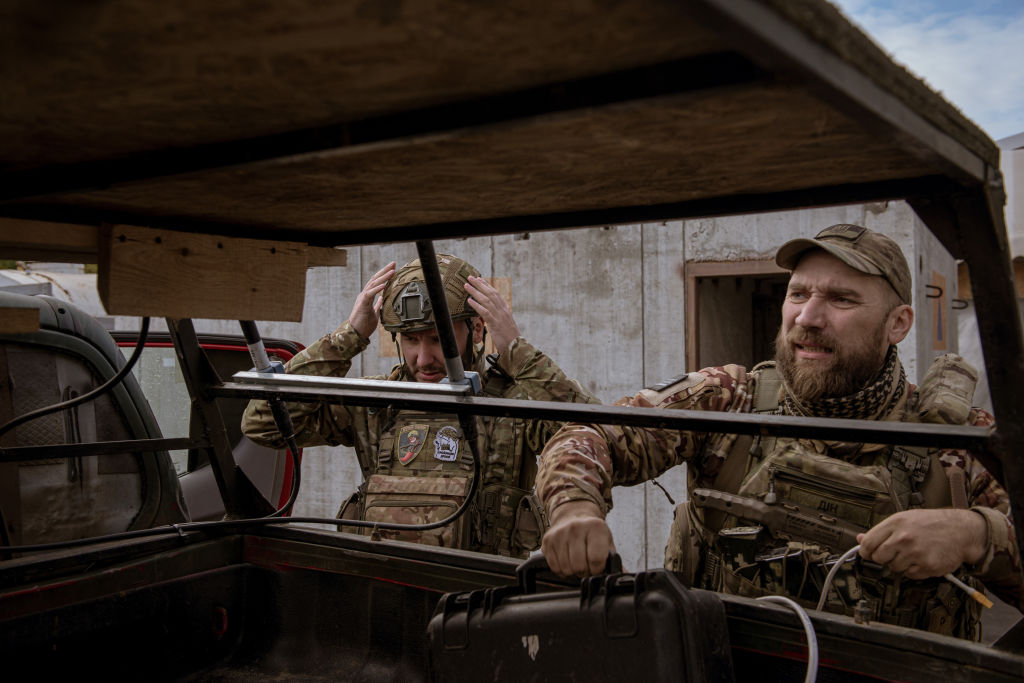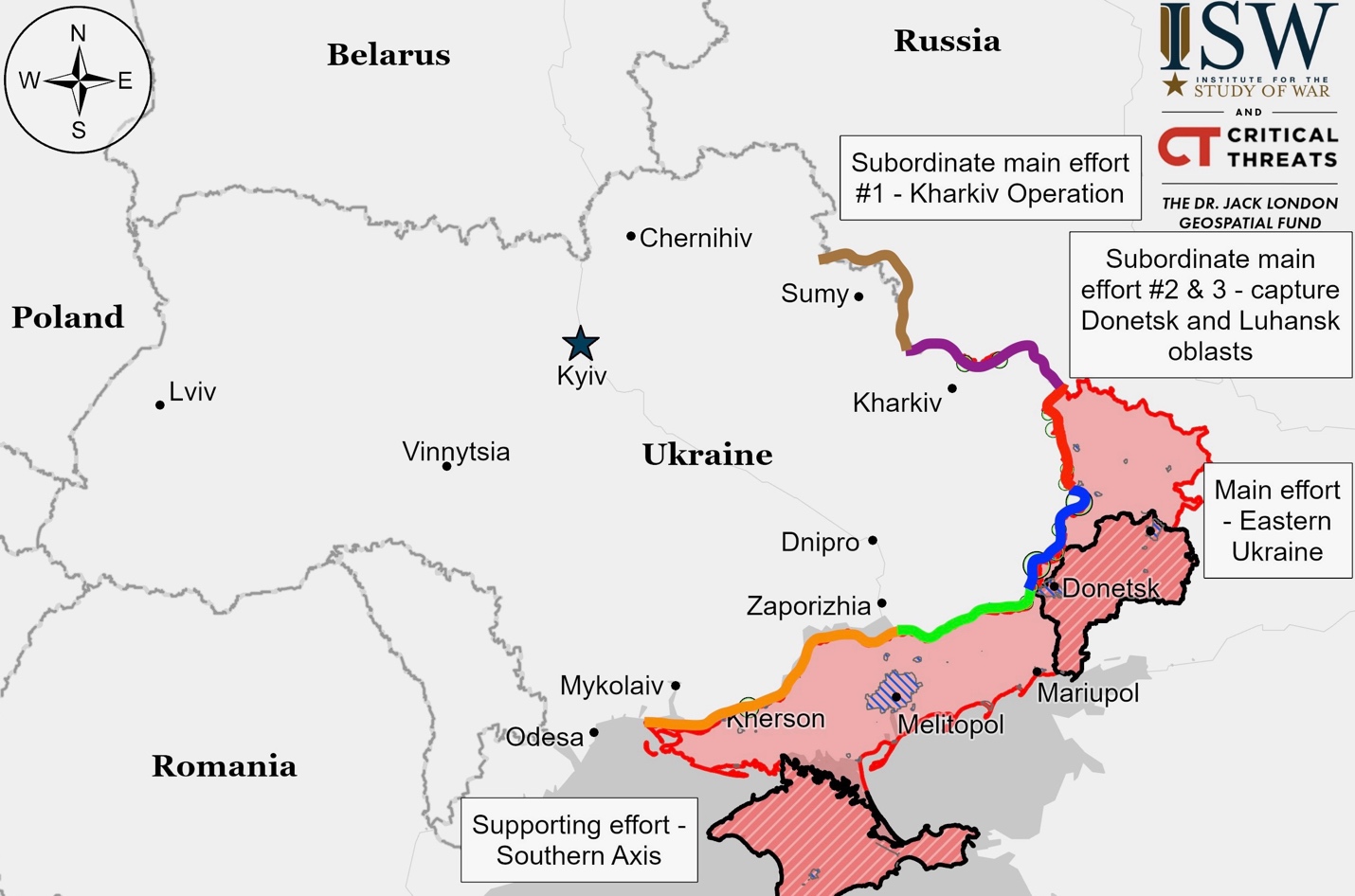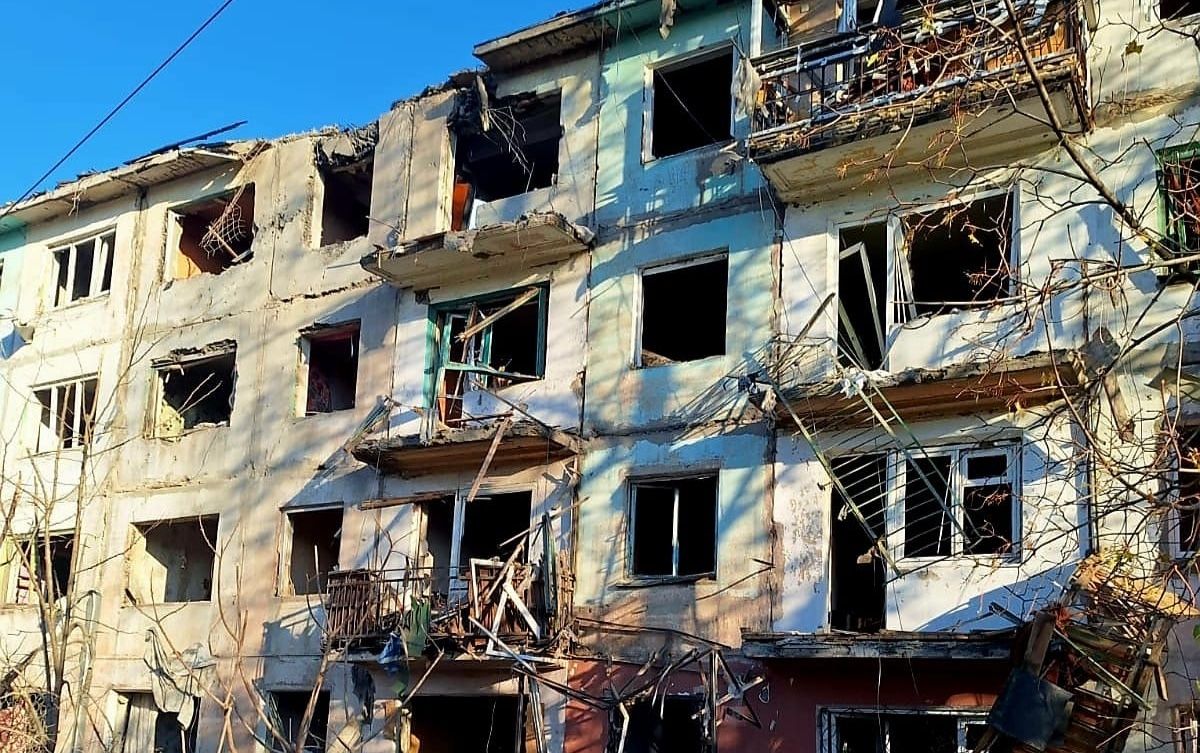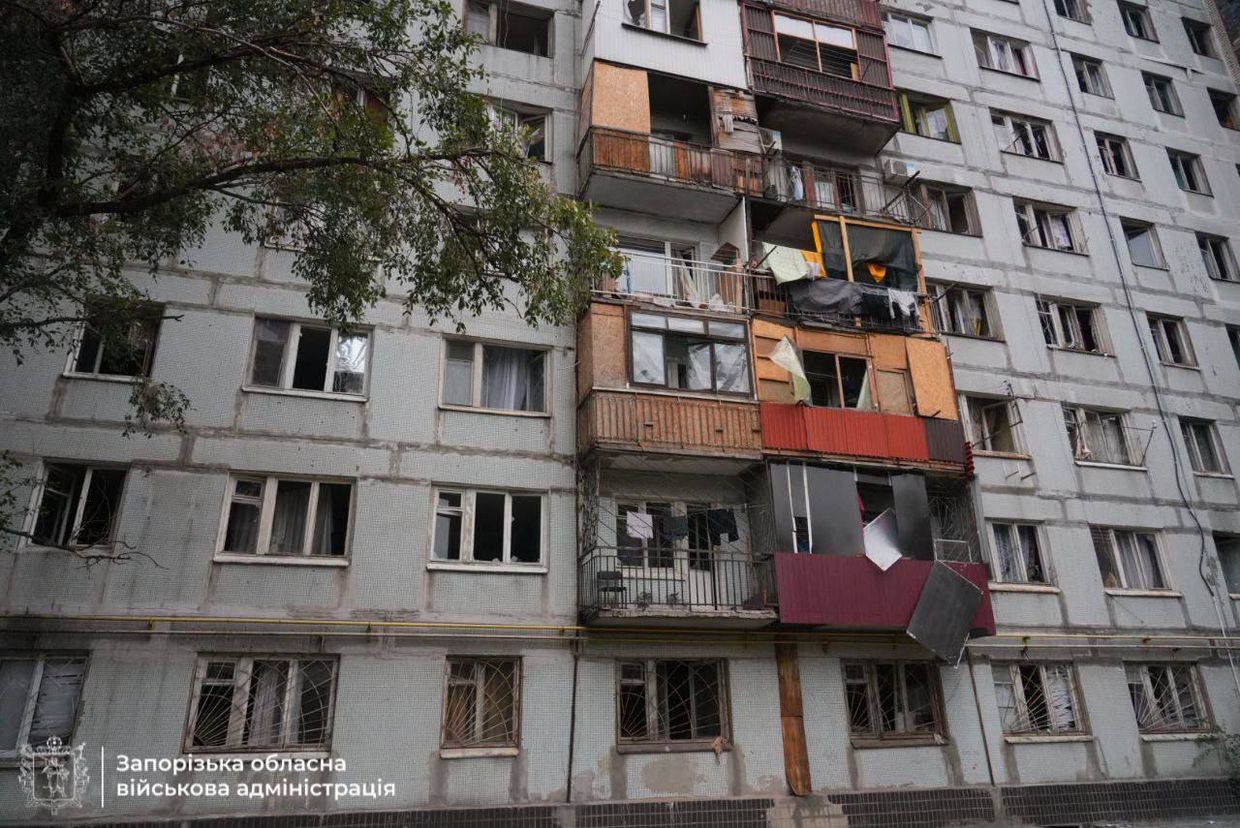Summary of the Day:
Moldova’s EU referendum passed by a narrow margin amid reports of Russian interference, setting up a presidential runoff between Maia Sandu and Alexandr Stoianoglo for November 3. US Defense Secretary Lloyd Austin visited Kyiv to announce a $400 million military aid package.
Russian forces advanced west of Kreminna, southeast of Pokrovsk, and southeast of Kurakhove, while conducting several mechanized attacks in the Kurakhove direction. Ukrainian forces made gains in the western part of the Kursk Oblast salient. Meanwhile, Russian occupation authorities continue forcing Ukrainian civilians to sign contracts with the Russian Ministry of Defense.
Reports emerged of new Russian war crimes, including the execution of Ukrainian POWs near Selydove and the use of chloropicrin chemical weapons against Ukrainian forces. Separately, Russia is attempting to ease tensions with South Korea following reports that North Korean troops have deployed to Russia for training.
Picture of the Day:
 Drone division 224th battalion of 112th brigade, Roman and Dean (commander of battalion – drone division) prepare for a trip to position around Kostiantynivka, Donetsk Oblast. (Andre Luis Alves/Anadolu via Getty Images)
Drone division 224th battalion of 112th brigade, Roman and Dean (commander of battalion – drone division) prepare for a trip to position around Kostiantynivka, Donetsk Oblast. (Andre Luis Alves/Anadolu via Getty Images)
Beyond Ukraine – The March Towards World War
Moldova’s October 20 EU referendum narrowly passed with 50.16% in favor of adding EU membership to the constitution, with a margin of under 10,000 votes. In the concurrent presidential election, pro-EU incumbent Maia Sandu received 42.45% and will face pro-Russian candidate Alexandr Stoianoglo (25.98%) in a November 3 runoff. The European Commission reported “unprecedented interference” from Russia, with Moldovan authorities alleging that Russian-linked groups attempted to buy 300,000 votes and that opposition figure Ilan Shor used a Russian bank to distribute $15 million to influence voters in September 2024. Election monitors confirmed evidence of foreign interference, including vote-buying incidents in the pro-Russian region of Transnistria, where Russian troops have been stationed since 1991.
Russian officials disputed the election results, with Foreign Ministry Spokesperson Maria Zakharova accusing Moldovan authorities of using “totalitarian” methods and questioning the vote counting process, while Kremlin Spokesperson Dmitry Peskov claimed Moldova is persecuting opposition forces. Russian-affiliated bloggers alleged vote falsification, with one calling for Russia to create centers to increase its influence in Moldova. Concerns persist about Russia potentially expanding its war in Ukraine into Moldova through the breakaway region of Transnistria.
The US State Department has offered a $10 million reward for information about foreign election interference, specifically targeting Rybar LLC, a Russian social media organization. Co-founded by former Defense Ministry employee and spetsnaz veteran Mikhail Zvinchuk, Rybar allegedly receives funding from sanctioned Russian defense company Rostec. The State Department claims Rybar uses its platform to promote social division and anti-Western sentiment in the US, particularly through anti-immigrant messaging. Zvinchuk has been under EU sanctions since June 2023, and the US is seeking tips about Rybar’s “malign influence operations.”
South Korea’s National Intelligence Service (NIS) reported that North Korea has dispatched approximately 1,500 special forces troops to Russia, transported by Russian naval vessels between October 8-13 from Chongjin, Hamhung, and Musudan areas. These troops are currently stationed at Russian bases in Vladivostok, Ussuriysk, Khabarovsk, and Blagoveshchensk, issued Russian uniforms and fake ID cards from Yakutia and Buryatia regions to conceal their identity. According to Ukrainian intelligence chief Kyrylo Budanov, around 11,000 North Korean troops are already in Russia, with 2,600 soldiers expected to deploy to Kursk Oblast by November 1. South Korea’s intelligence service indicates that North Korea plans to send a total of 12,000 soldiers, including the 1,500 special forces, marking North Korea’s first foreign war deployment. This military support follows North Korea’s previous aid to Russia through arms packages, including 1.5 million artillery shells and ballistic missiles, stemming from a security agreement signed between Vladimir Putin and Kim Jong-Un in June.
In response, South Korea summoned Russian Ambassador Georgy Zinoviev to protest these actions, calling them a “grave security threat.” The Kremlin spokesperson Dmitry Peskov has evolved his stance from dismissing the reports as “fake news” to calling them “contradictory,” while attempting to downplay the situation and claiming their cooperation with North Korea poses no threat to Seoul. NATO Secretary General Mark Rutte has warned that North Korean troops joining Russia’s war in Ukraine would be a “significant escalation,” and a senior U.S. lawmaker warned that such deployment would cross a “red line,” although the U.S. has not yet confirmed these reports.
President Yoon Seok-Yeol, in discussion with NATO Secretary General Mark Rutte, promised action against this escalation. South Korea is now reconsidering its policy of not sending weapons to countries at war, which could lead to direct military aid to Ukraine, expanding beyond their current non-lethal support such as trucks, mine-clearing equipment, and humanitarian aid provided through the US.
A Belarusian military delegation attended a Shanghai Cooperation Organization forum for young officers in Beijing.
Serbian President Aleksandar Vucic spoke with Russian President Vladimir Putin on Sunday, their first conversation since May 2022. The discussion covered Russian gas supplies to Serbia, with Vucic thanking Putin for ensuring winter fuel supplies. They also discussed the upcoming BRICS summit in Kazan (October 22-24), though Serbia remains undecided about attending. While Serbia has condemned Russia’s invasion of Ukraine and seeks EU membership, it has not imposed sanctions on Russia, particularly regarding oil and gas imports.
The Path to Peace
President Zelensky announced growing international support for his Victory Plan, citing backing from France, Lithuania, Scandinavian countries, and other EU partners, with “positive signals” coming from the United States. He confirmed new defense and energy support packages have been secured.
Situation On The Land, Sea, and Air in Ukraine
Russian forces committed new war crimes in Ukraine, including executing two unarmed Ukrainian prisoners of war near Selydove, Donetsk Oblast on October 18. Russian forces are also using chloropicrin, a chemical weapon that damages lungs, against Ukrainian troops. The US State Department confirmed Russia’s use of these banned chemical agents, which violates the Chemical Weapons Convention. No Russian personnel have been held accountable for these war crimes.
Ukrainian forces shot down a Russian “Orion” drone over Kursk Oblast. This type of drone is considered particularly dangerous as it can both conduct surveillance and carry up to four missiles for ground attacks.
Russia has relocated parts of its Black Sea Fleet from occupied Crimea to Novorossiysk due to successful Ukrainian naval drone attacks. According to Russian official Dmitry Rogozin, large Russian ships became vulnerable to Ukrainian unmanned boats, forcing this strategic retreat. Ukrainian military reports that about 30% of Russia’s Black Sea Fleet has been lost or disabled since the invasion began.

Ukrainian Operations in the Russian Federation – Initiative Russia
Ukrainian forces have made advances in the Kursk Oblast region, specifically in western Novoivanovka. Fighting continues in multiple settlements including Glushkovo, Novyi Put, Veseloye, Nizhny Klin, Lyubimovka, Leonidovo, and Zeleny Shlyakh. Ukrainian forces reportedly attempted to cross the border near Volfino and have deployed additional reserves in the Kruglenkoye-Nikolskiy area.
Russian forces are attempting to explain their slow progress in Kursk Oblast. A Chechen “Akhmat” Spetsnaz commander claimed this area is the most challenging part of the frontline, suggesting they face 14 Ukrainian brigades and Western military contractors. These claims appear to be an attempt to justify their limited advances in the region.
Russian authorities detained 18 North Korean soldiers who attempted to flee their positions in Russia’s Kursk region on October 14 after being left in a forest without food or clear instructions. These soldiers were originally part of a group of 40 North Korean instructors stationed near Kolyachek in the Khomutovsky district, where they had been training Russian forces in military balloon usage while receiving modern combat training in return. The deserters were caught two days later, approximately 60 kilometers from their post, and subsequently, all 40 North Korean soldiers have been relocated to the Lgovsky district of Kursk region for planned assault operations.
A major Russian microelectronics manufacturer, “Kremniy El Group,” has suspended operations after Ukrainian drone strikes on October 18 and 19 damaged its power facilities. The company’s CEO, Oleg Dantsev, noted they are struggling to obtain parts needed for repairs.
Ukrainian forces reported destroying a Russian Buk-M3 air defense system located approximately 60 kilometers from the frontline through their Unmanned Systems Forces. The $40-50 million system, capable of intercepting aerial targets up to 65 kilometers away, was struck at an unspecified location that could be either in Russia or occupied Ukraine.
Kharkiv Front – Initiative Russia
Russian forces attacked near Vovchansk and Lyptsi, northeast of Kharkiv City, but failed to make any confirmed progress.
Luhansk Front – Initiative Russia
Russian forces advanced west of Kreminna with confirmed progress east of Terny. Ukrainian forces repelled a Russian mechanized assault in this area. Russian forces also conducted offensive operations across multiple locations along the Kupyansk-Svatove-Kreminna line, including near Holubivka, Petropavlivka, Kruhlyakivka, Kolisnykivka, Lozova, Novoosynove, Pishchane, Vyshneve, Yampolivka, Hrekivka, Novomykhailivka, Novosadove, Zarichne, and in the Serebryanske forest.
Donetsk Front – Initiative Russia
Siversk
Russian forces attacked near Siversk targeting Verkhnokamyanske, Ivano-Darivka, and Pereizne, but made no advances. A Ukrainian military spokesperson reported that Russian forces are using diverse vehicles for their assaults, including both military vehicles and civilian transportation like golf carts and motorcycles.
Chasiv Yar
Russian forces reportedly advanced up to one kilometer south of the Bakhmut-Kostyantynivka highway near Stupochky, south of Chasiv Yar, though these claims remain unconfirmed. Russian forces are reportedly about 7-8 kilometers from Kostyantynivka.
Toretsk
Russian forces attacked in the Toretsk area with reported fighting along Druzhby Street in central Toretsk and near the settlements of Druzhba, Nelipivka, and Shcherbynivka. While street battles are reported, no advances have been confirmed. Russian forces are operating in the area and have captured Niu York and are advancing into Nelipivka.
Pokrovsk
Russian forces have made advances southeast of Pokrovsk, reaching northeastern Selydove and crossing the Vovcha River in Zoryane. They have reportedly captured Hrodivka, Mykolaivka, and Krasnyi Yar. Fighting continues across multiple settlements including Sukha Balka, Vozdvyzhenka, and Myrolyubivka. Near Selydove, a town of 21,000 people, Russian forces are conducting major infantry and mechanized assaults. After Ukraine’s withdrawal from Vuhledar, Russian forces are now targeting Pokrovsk, Toretsk, and Kurakhove, where Ukrainian defenders are struggling due to being outnumbered.
West of Donetsk City
Russian forces have advanced southeast of Kurakhove, conducting mechanized assaults with significant armor near Kostyantynivka and Katerynivka, capturing Kostyantynivka and likely securing all of Maksymilyanivka, including the dacha area east of Kurakhove. Fighting continues near Kurakhove, Kurakhivka, Maksymilyanivka, Antonivka, and Kostyantynivka with multiple Russian military units involved. The 46th Ukrainian Airmobile Brigade repelled Russian attempts to capture Maksymilianivka, reportedly destroying seven pieces of Russian equipment, and Ukraine’s forces defended against 59 attacks in the Kurakhove sector in one day. Russian forces are also attempting to storm Selydove, located 25 kilometers from Kurakhove, using large numbers of infantry.
Southwest of Donetsk City
Russian forces attacked near Vuhledar targeting Vodyane, Bohoyavlenka, and Novoukrainka, but made no confirmed advances.
Zaporizhia Front – Initiative Russia
Zaporizhia-Donetsk Border Area
Reporting indicates there was no fighting along the Donetsk-Zaporizhia Oblast border region.
Zaporizhia Line
Russian forces attacked near Robotyne and Mala Tokmachka, but failed to gain any territory along the frontline.
Kherson (Dnipro River) Front – Initiative Russia
Russian forces attacked in eastern Kherson Oblast making no advances.
Ukraine News
Russia launched a major attack against Ukraine using 116 drones, one Iskander-M/North Korean KN-23 ballistic missile from Crimea, and two missiles from the Black Sea, with Ukrainian forces intercepting 59 drones across multiple regions and neutralizing 45 drones through electronic warfare. President Zelensky noted that Russia has launched 6,130 Shahed drones since early 2024. The strikes hit multiple areas: damaging civilian and port infrastructure in Kryvyi Rih, Kyiv, and Odesa; striking critical infrastructure in Sumy Oblast’s Romensky Raion; hitting a residential area in Zaporizhia City; and targeting three districts in Kharkiv City with KAB-250 glide bombs and Grom-E1 hybrid bombs, causing civilian casualties.
During a five-hour air raid, falling debris damaged three Kyiv districts: an electric cable in Dniprovsky district, apartment walls in Holosiivskyi district, and causing a house fire in Solomianskyi district where one person suffered facial burns. Earlier strikes on Kharkiv injured 12 people and caused power outages, while three people were injured in Kryvyi Rih. Officials described the attacks as random strikes aimed at terrorizing civilians rather than targeting military installations, with Ukrainian officials expecting more attacks on energy infrastructure as winter approaches.
Innocent Victims Of War
The casualty count of civilians in the past 24 hours: (Russian War Crimes)
DEATHS: 6 INJURIES: 18
Russian forces launched attacks in Ukraine’s Donetsk Oblast, striking the towns of Kurakhove and Myrnohrad in the Pokrovsk district. Three people were killed and two were injured in the attacks. In Myrnohrad, located 7 kilometers from Pokrovsk, two people died and one was injured, with 33 buildings damaged. In Kurakhove, the strikes killed one person, injured another, and damaged multiple buildings, including a five-story structure.
A Russian attack on the city of Zaporizhzhia killed three people and injured 16 others. The strike damaged 30 buildings in a residential area. Of the injured, ten people were hospitalized, with two in serious condition. Two men died immediately, while a woman succumbed to her injuries at the hospital.
 The aftermath of the Russian attack on the town of Myrnohrad in Donetsk Oblast. (Yurii Tretiak/Myrnohrad Military Administration)
The aftermath of the Russian attack on the town of Myrnohrad in Donetsk Oblast. (Yurii Tretiak/Myrnohrad Military Administration)
 A building damaged in Zaporizhzhia after a Russian attack. (Governor Ivan Fedorov/Telegram)
A building damaged in Zaporizhzhia after a Russian attack. (Governor Ivan Fedorov/Telegram)
Ukraine’s Allies
During a surprise visit to Kyiv, U.S. Defense Secretary Lloyd Austin announced a $400 million military aid package for Ukraine, which includes HIMARS ammunition, TOW missiles, M113 armored carriers, various artillery and mortar systems, anti-armor weapons, communication equipment, and small arms. Additionally, President Zelensky announced that Ukraine will receive $800 million in U.S. military aid specifically for drone production.
A North Korean KN-23/24 missile shot down in Ukraine’s Poltava region in September contained Western-made components, including microelectronics from US, Swiss, British, and Dutch manufacturers. Ukrainian Foreign Minister Andrii Sybiha called for stronger sanctions and export controls in response.
Life in Russian-Occupied Ukraine
The International Atomic Energy Agency (IAEA) has funded Russian scientific research in occupied Crimea since 2014, despite publicly supporting Ukraine’s territorial integrity, according to documents obtained by Radio Free Europe/Radio Liberty. The IAEA signed agreements with Russian institutes between 2016 and 2019 without Ukrainian government approval. While the IAEA maintains it recognizes Crimea as Ukrainian territory, Ukrainian authorities have criticized the agency for its “ambivalent position.” The IAEA currently has monitoring teams at the Russian-occupied Zaporizhzhia Nuclear Power Plant, though inspectors are denied full access.
Life in Ukrainian-Occupied Russia
Russia News
Ukraine’s Main Intelligence Directorate (HUR) reports that Dmitry Golenkov, Chief of Staff of Russia’s 52nd Aviation Squadron and Heavy Bomber Aviation Regiment, was found dead with multiple head injuries apparently caused by a hammer near Suponevo in Bryansk Oblast, Russia. According to HUR, Golenkov was responsible for missile strikes that killed civilians in Ukraine, including the June 2022 bombing of the Amstor shopping center in Kremenchuk that killed 22 people, and a January 2023 strike on a Dnipro residential building that killed 46 civilians, including 6 children.
Yulia Navalnaya, widow of Russian opposition leader Alexei Navalny, told the BBC she would run for president if she could return to a post-Putin Russia. Currently living abroad due to fear of arrest, Navalnaya faces extremism charges in Moscow that prevent her return. Her husband died in a Russian penal colony on February 16 after being imprisoned on fabricated charges following a 2021 assassination attempt. While she continues her late husband’s opposition work, Navalnaya acknowledges she cannot return to Russia while Putin remains in power. Her husband’s memoir “Patriot,” which she helped edit, will be published October 22.
Russian Mobilization and Defense Industrial Base
Russian authorities have raised one-time enlistment bonuses for contract military service to 2.3 million rubles ($23,759) in Moscow Oblast, as part of ongoing efforts to avoid further mobilization. Some Russian military bloggers criticize this approach, arguing it may lead to unmotivated personnel and put soldiers at risk while benefiting career-focused officials.
Russian occupation authorities in Starobilsk, Luhansk Oblast, are targeting schoolchildren with financial incentives and social benefits to sign military contracts with Russia’s Ministry of Defense. Local teachers are promoting these contracts as the most profitable form of military service.
Russia plans to test an upgraded drone detection system called “T1-am” that uses cellular signals to track drones. The system can use up to 250 sensors, particularly in Belgorod Oblast, and is designed to better detect drones flying along riverbeds. This new technology allows sensors to be placed at any distance for more accurate drone tracking.
Russia’s Allies
Belarus President Lukashenko announced that Belarus and Russia are discussing plans to build a Moscow-Brest expressway.
Controlling the Narrative and Russian Propaganda
Russian-appointed Zaporizhia Governor Yevgeny Balitsky made an unfounded claim that Western nations might stage an attack on the Kyiv Hydroelectric Power Plant and blame Russia.
Source Material
Institute for the Study of War – understandingwar.org
The Kyiv Independent – kyivindependent.com
Kyiv Post – kyivpost.com
